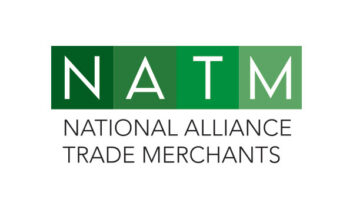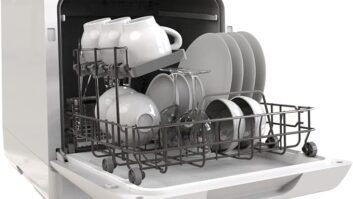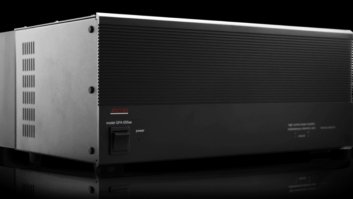The NATM Buying Group said it is maintaining its market share as majap sales drop, but its flat-panel TV business is still healthy.
Bill Trawick, executive director/president, and Michael Maund, operations director of the group which has 12 regional electronics/appliance retail members that generate more than $3.8 billion in annual sales, told TWICE that while the first quarter has been tough, NATM has been able to maintain and even increase its market share in certain categories.
The mix of NATM’s sales is currently 45 percent CE and 30 percent major appliances, which the group tracks. The “others” category is a growth area consisting of various items like home office, furniture, lawn care and barbeques that some, but not all, NATM members carry.
Trawick reported, “It’s been a tough first quarter. As we look at appliances, it is still the toughest side of the business. Now that we have been in a downturn for awhile, you realize it is in relation to the markets you play in. Florida, Detroit, California, Las Vegas, maybe even Phoenix are the toughest markets.”
It is the type of year, Trawick pointed out, in which “most of our members are running negative sales numbers in appliances. As a group we are doing better than the industry, so we are holding our share or gaining our share as a group.”
He noted that majap sales have been haphazard, where “one month cooking products will be good, but another category will be down. There is softness across the board.” As far as how his members are competing in the marketplace, Trawick said, “We are priced right and there are good promotions by members. They are most aggressive out there … and they are driving consumers into their stores.”
Trawick explained the big change in consumer behavior when it came to major appliances in the last three or four years: “We saw a great surge in new appliances and technologies. Members said during that time when they took away the old appliances they were still working, there was nothing wrong with them because consumers had more disposable income to buy new technology. Now the consumer seems to be saying, ‘My old one still works, but when it breaks I’ll buy new technology.’ It has gone back to the replacement business of 10 years ago.”
Trawick added, “We have seen 10 to 12 years of tremendous growth [in major appliance sales]. Even last year, which may have been our second worst year during that time period, was pretty good. This is not a disaster industry. It is aggressive with nationals fighting for their share with promotions, which has made it tough on margins.”
In consumer electronics, flat-panel TVs have been the obvious star with sales described as “very, very strong” by Trawick, and that its strength in the category “offsets weaknesses in other CE categories,” some of which “are some that are tougher than appliances.” He did not specify which CE categories may have had some problems.
When asked if the problems of two main competitors, Sears in majaps and Circuit City in CE, have boosted sales or hurt margins, Trawick discussed Sears first, saying, “I don’t think we’ve seen anything more dramatic in promotions than the past, except for more frequency of the 10 percent off, 15 percent off deals. Where we may have seen it once a month, now it is twice a month.”
Electronics is a “different story” and doesn’t just involve Circuit City. “Flat-panel TV margins have been impacted by aggressive promotions from national chains and the clubs.” Still Trawick maintains that NATM members are “gaining in share” for flat panel and “doing a better job than the industry. We are holding our own out there.”
In discussing the now-settled Blu-ray/HD DVD format war, Trawick said that it backed the losing format, and while NATM members struggled to get Blu-ray immediately after the end of the battle, “Product is coming in and [supplies] have loosened up.”
Trawick gave high marks to Toshiba on its decision to drop the format. “We did not get hurt in any way. Toshiba did the right thing for the members and gave them choices to keep the product or return it. There was no real financial impact on our members.”
On the analog-to-digital TV conversion in February 2009 and the related converter-box issues, Maund said that the education push with TV ads seems to be working. “You see ads on TV much more frequently. That enables consumers to make a choice about a converter box or adding cable or satellite for the second or third set in the home.”
Trawick noted, “We are eight months away from the deadline. If someone’s TV is working, especially with the economy the way it is, maybe some won’t want to buy now. But as we get closer, business for HDTV will go up It should help us in the fourth quarter.”
As for Chinese CE factories being hit with higher costs, both Trawick and Maund have heard stories from suppliers, which include new safety standards for plant employees. They have also heard China has told its TV makers to satisfy HDTV demand in its country prior to the Olympics before satisfying overseas demand.
But when it comes to higher prices, Trawick responded, “The problem is I hear it every year and what happens here is that given the retail environment [in the United States] with national chains and warehouse clubs involved, vendors can absorb small increases in costs. At this point I can’t personally see higher prices. I see programs now that are being shipped in 30 to 60 days and there is no evidence of prices going up. But later on in the year? We’ll see.”













